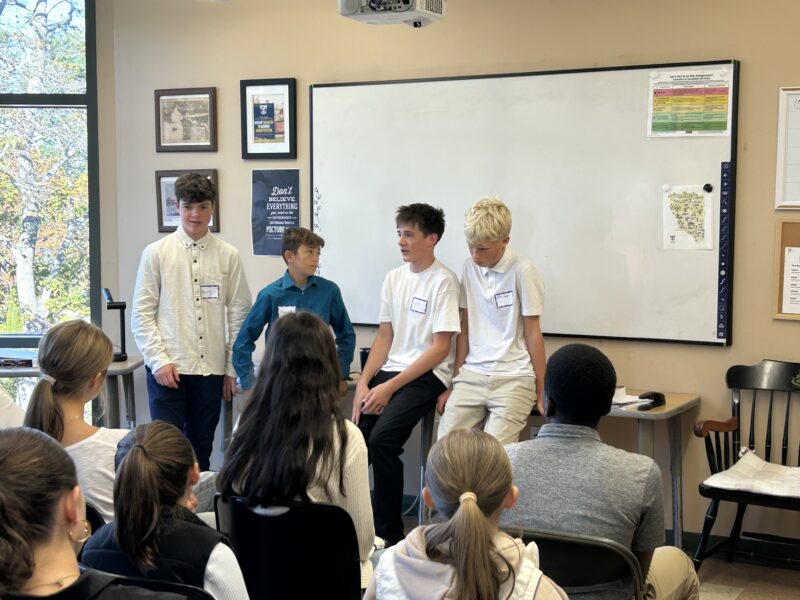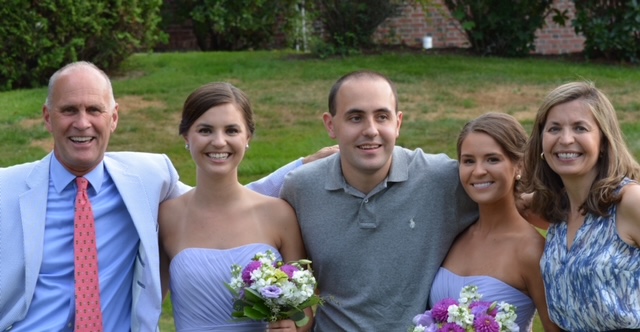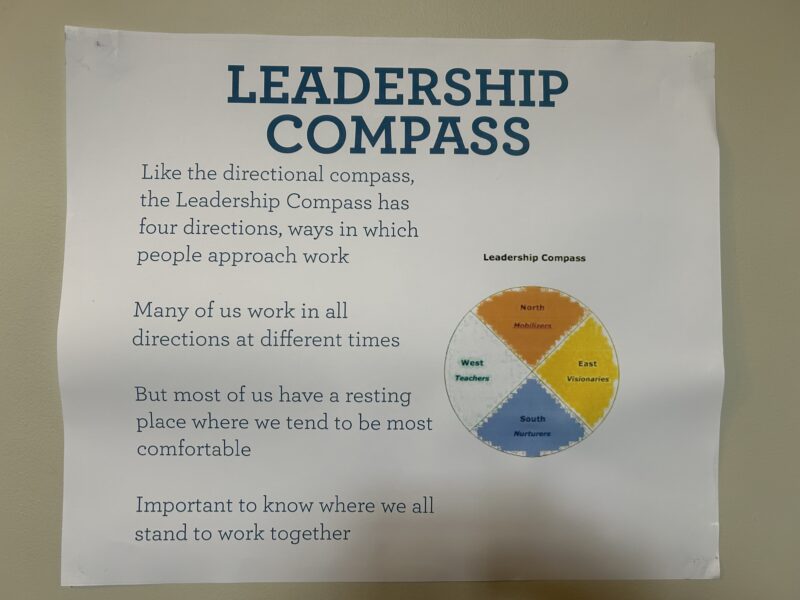So how does the School Meeting work?
First and foremost, it is essential that students and faculty understand and respect the school meeting as an almost sacred feature of the curriculum. It must be approached with a seriousness of purpose that can actually be seen and felt in the form of attentive students with positive body language. We follow a few simple rules and practices.
1. We sit in a fairly tight circle. Chairs are occupied beginning with those up front. We do not permit students to straggle off into the fringes of the room.
2. Students are expected to sit up and pay attention. Their body language should demonstrate that they are listening to others when they speak. They should not be whispering, carrying on private conversations with friends. We will occasionally move individual students away from their preferred seating arrangements if necessary.
2. Students and faculty raise their hands to speak as is the case in classes. Appropriate language is expected.
3. Sometimes we break up into smaller groups to discuss certain issues.
4. Sometimes the facilitator begins the meeting with, “Is there anything you would care to discuss before the meeting begins? This simple question has been known to evolve into an entire meeting unto itself, causing us to scrap the topic originally intended for that particular meeting.
5. Sometimes the facilitator will move to a new topic despite the fact that hands are still raised to discuss a previous topic. Every thought cannot be heard in a 60-90 minute meeting. It is important to remind students that the meeting is designed to raise issues, not necessarily to resolve them. The best meetings inspire discussions to occur after the meeting. A sea of wildly waving hands can be an indication of an ideal time to break into small groups.
6. It is a good idea to recap the meeting during the last 5-10 minutes. A simple “What did you learn today?” will usually suffice. Sometimes the facilitator will ask the students to share follow-thru action steps they are considering as a way to establish lasting benefits relative to the message of the meeting.
While the above guidelines are hopefully helpful to an understanding, we try not to be strait-jacketed by them. Over time, I have observed that school meetings tend to fall into four broad areas of character development and personal growth:
1) Meetings that foster community-building
2) Meetings that inspire us to strive for our individual and collective best
3) Meetings that provide opportunity for self-assessment
4) Meetings that offer wisdom for all
Onward, Malcolm Gauld


